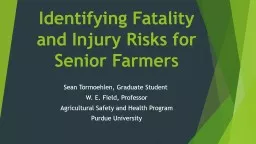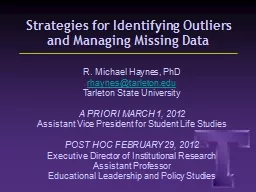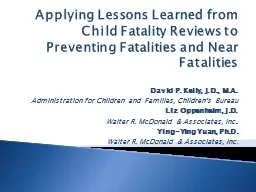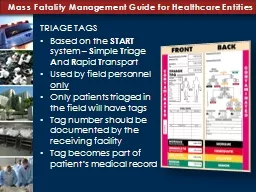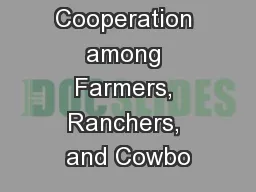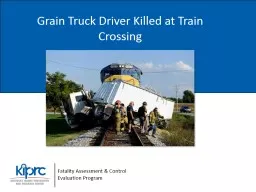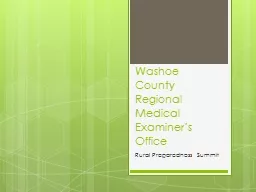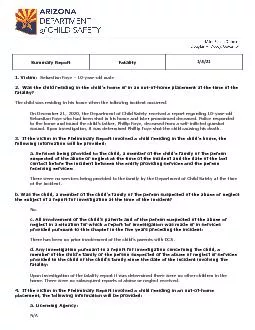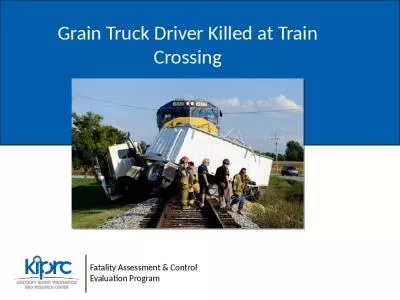PPT-Identifying Fatality and Injury Risks for Senior Farmers
Author : tawny-fly | Published Date : 2019-06-27
Sean Tormoehlen Graduate Student W E Field Professor Agricultural Safety and Health Program Purdue University Our Aging Agricultural Population Average age of
Presentation Embed Code
Download Presentation
Download Presentation The PPT/PDF document "Identifying Fatality and Injury Risks fo..." is the property of its rightful owner. Permission is granted to download and print the materials on this website for personal, non-commercial use only, and to display it on your personal computer provided you do not modify the materials and that you retain all copyright notices contained in the materials. By downloading content from our website, you accept the terms of this agreement.
Identifying Fatality and Injury Risks for Senior Farmers: Transcript
Download Rules Of Document
"Identifying Fatality and Injury Risks for Senior Farmers"The content belongs to its owner. You may download and print it for personal use, without modification, and keep all copyright notices. By downloading, you agree to these terms.
Related Documents

